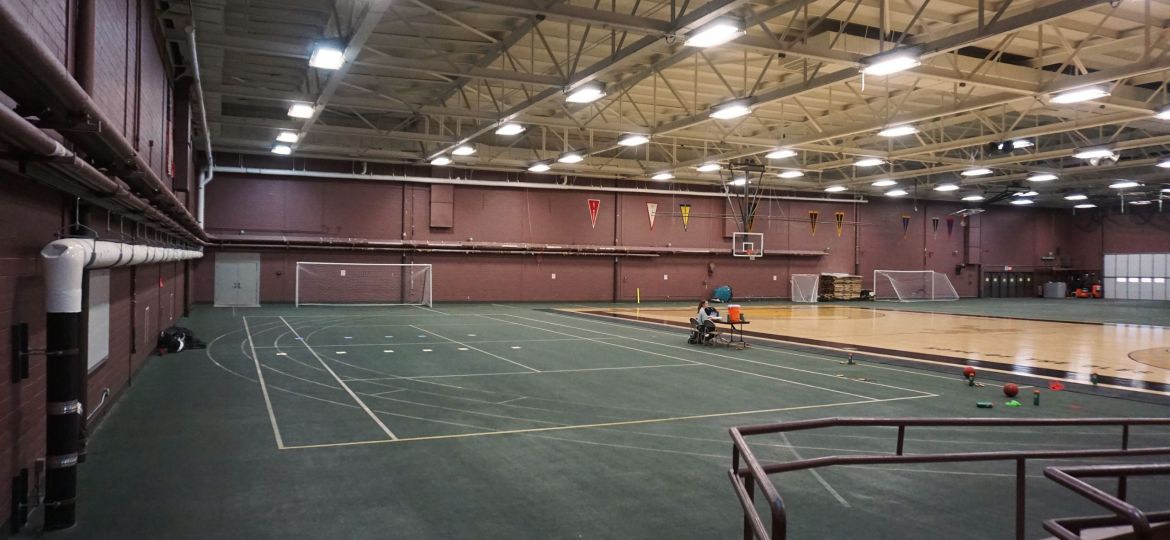
As early as January 2018, St. Olaf will begin construction of a campus ice rink. Following the “Bring Ice Home” fundraising campaign, the College plans to transform the Skoglund Field House into a functional ice arena. However, financing the project has been complicated.
The ice arena plan is the sole brick and mortar piece of the $200 million “For the Hill and Beyond” fundraising campaign initiated in the 2016-17 school year. According to the Bring Ice Home website, the College seeks to build an $8 million dollar ice arena facility. At press time the College has met 73 percent of that goal and is “$140,000 away from reaching our $6 million threshold to initiate construction.”
However, according to Chief Financial Officer Janet Hanson, the College has been in talks with donors who will likely move the total closer to the $6 million goal once they begin construction. Regardless, the College will break ground on the rink soon.
“The project is moving forward because to delay it will increase cost,” Hanson said. “We have been advised that construction material costs are predicted to increase three times the current cost by next spring because of demand in the Gulf Coast and Florida created by this fall’s hurricanes. Delaying this project would mean that capital funding for other projects in the queue be redirected to the ice arena.”
In order to begin construction earlier, the College is taking out a loan which will be repaid by donations over a series of years.
“The College is negotiating a short-term loan to begin construction now and avoid increased costs later; that loan will be paid with pledge payments as they’re received over the next three to four years,” Hanson said.
With this short-term loan, the College could begin construction in the upcoming months.
“We expect to have the final construction documents completed by mid-December with final quotes shortly thereafter,” Hanson said. “The plan is to have contracts executed for a mid-January start date.”
There is not a separate endowment for maintenance of the arena, but the funds currently allocated for rental of the Northfield ice facility, the Skoglund field house operational funds and offsets from College solar gardens will help to assume those costs, which will become part of the College’s operating budget.
The Skoglund field house and Tostrud floor are currently the primary indoor practice spaces for a number of St. Olaf varsity, club and intramural sports.
In some cases, the College has chosen to renovate existing space to compensate for the transitioned field house. For example, between January 11-15, the floor of Tostrud will be resurfaced in order to make it conducive to tennis play, in addition to other sports. Still, the loss of the field house is problematic for intramural and club sports, who rely on that space for practice.
“It cuts the practice spaces in half,” captain of the women’s ultimate frisbee team Tulsa Douglas ’18 said. “That means it’s a lot harder for us to schedule practice times, we will likely get fewer practice times. It also means that the practice times we get are much worse. Our coaches won’t be able to come because we will be practicing really early in the morning or late at night.”
Club sport practice times are scheduled after in-season varsity and intramural sports, so Douglas was unsure exactly how much their practice time may be cut. Douglas said she knew about the ice arena project, but was not notified until Nov. 6 that it would built this year, which is after the club sports funding period.
“There was nobody when they were starting the ice initiative coming to us and saying, ‘sorry this is going to affect your space, here is what we can do to help you,” Douglas said.
Indoor practice spaces off campus would be prohibitively expensive, Douglas said, costing the club $450 per hour.
The athletic department has identified the construction of another field house as a potential future solution.
“Nothing is imminent, no timeline, no design, no price tag, but we certainly have recognized that’s something we need to do in the future,” Athletic Director Ryan Bowles said.
The department is also thinking ahead about how they will schedule without the field house.
“We have already started to identify and look at our schedules for Tostrud for next semester and how we are going to schedule some of our spring sports, club sports, all of those things,” Bowles said.
Judy Tegtmeyer, Recreation Director and Facility Coordinator, reiterated that changes are going to have to be made, including exploring underused facilities.
“We need to change what we are doing for intramurals a bit, utilizing spaces we maybe were before. For example the racquetball court. We will be doing wallyball or coming up with other things to do in that space,” Tegtmeyer said.
According to Bowles, the reception within the athletic department regarding the ice rink has been mostly positive.
“I think the reception within the athletic department has been a positive one because it’s time. It’s time for our men’s and women’s varsity [hockey] programs to have a place on campus,” Bowles said.
The ice arena has drawn some criticism as it is beginning amidst the Strategic Resource Allocation Proposal (SRAP), a College initiative to review operations, increase revenue and decrease costs. However, Bowles sees the arena as a valuable investment.
“The timing is unfortunate,” Bowles said. “It’s really unfortunate that we are going through this SRAP process at the same time that we are building an ice arena, but I view that ice arena as an investment in our students and in our community. We talk about how we very much believe in athletics that we are an extension of the classroom and we learn a lot of valuable lessons, and we think that this is kind of building a classroom.”

